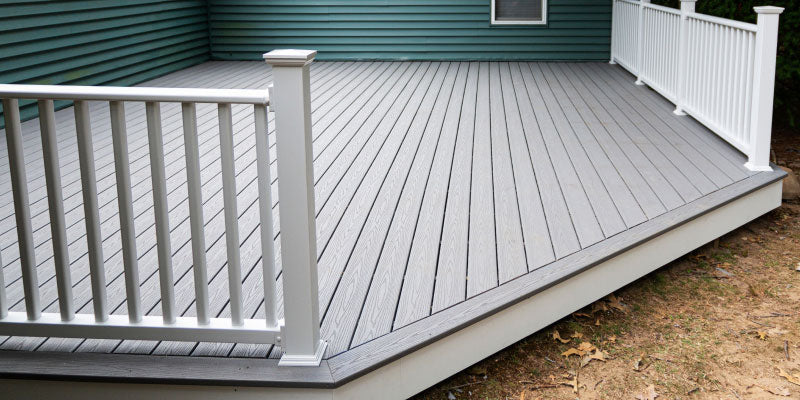
Deck Fascia Options and Ideas
|
|
Time to read 2 min
|
|
Time to read 2 min
When you fasten the final board on your completed deck, all you want to do is grab a cold drink out of the fridge and enjoy your accomplishment. However, adding a few finishing touches can make a tremendous difference in your deck’s appearance and stability. It all starts with the fascia.
Fascia refers to a band or ribbon of wood or other material that borders the deck below its surface line. It’s like the fascia installed beneath your home’s roof, but serving a different purpose. It is usually constructed of 1-by-8 or 1-by-10 boards.
On a deck, fascia serves a primarily aesthetic purpose. It partially conceals the joists under your deck from view and creates a polished, finished look. It can also add visual contrast if you use a different paint or stain than you applied to the deck itself.
While a skirt is not necessary to enjoy your deck, it does hide the joists underneath and adds aesthetic appeal. Lattice, horizontal boards, and vertical boards can all make excellent skirting material.
Since frost heave can damage deck skirts, attach the skirting to the fascia rather than anchoring it to the ground. Design a door so you can access the area beneath the deck to exterminate pests nesting there or take care of a mold problem, for instance.
This superior composite outperforms standard wood plastic composite boards when it comes to installation and long-term beauty. Choose the material you prefer for your fascia. If you’re using composite decking material, for example, consider also using that material for the fascia and other finishing elements. You already know how to work with it, and the uniformity will enhance your deck’s appearance. Measure the perimeter of your deck to determine how much extra material you will need for the fascia. Cut the boards so they fit snugly around the base of the deck. If you like, leave a small lip underneath the deck’s surface. Some homeowners even finish off the deck edge with bullnose trim. Attach the boards to the rim joists using construction adhesive, nails, or screws. Miter the edges based on the angles you’ve established with your deck, then paint or stain the materials according to your preferences. The raw, rustic look of a deck without fascia appeals to many homeowners. It’s also important to note that improperly installed fascia can collect dirt and moisture, which can lead to further deck damage. Understanding fascia helps you build a deck that you’ll enjoy for years to come. Use fascia, trim, and skirting to polish its appeal and keep it safe from the elements.How Do You Install Fascia On A Deck?
What if You Don’t Want to Use Deck Fascia?